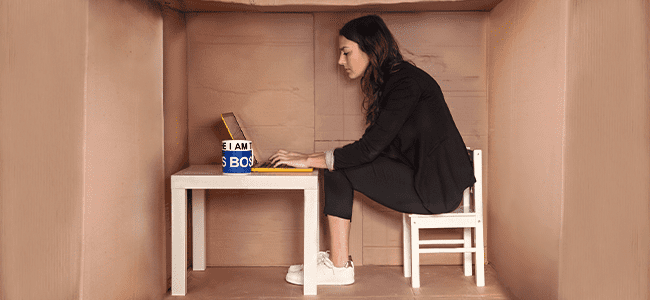“In business, you don’t get what you deserve, you get what you negotiate,” Chester Karrass, Founder of Seminar group Karrass.
At some point, around halfway through the pandemic, experts began to whisper that office space was dead. “No one will be using an office by 2023,” they said. And yet, while it’s true that office space use has declined steeply in some parts of the country, many companies are still finding a use for a dedicated environment in which to conduct business.
Do you need an office for your business?
Remote work has proven that the humble office we remember is not essential, but there are still several functions an office can serve. For many employees, an office can serve simply as a distraction-free environment in which to work, while for others it may cement team relationships. For others, it can be a way to separate work and home lives. Employees also often need physical meeting spaces, a place to pore over designs and showcase physical models. Moreover, introducing new employees is easier in a formal physical office space, as is hosting company celebrations.
Despite this, remote work has seen a decrease in demand in many parts of South Africa and given this there has never been a better time than now to negotiate for that dedicated office space if you find that your company needs it.
These tips will help you get what you need.
Get the right amount of space
Here’s a quick guide to getting the space you need and no more:
- Conference room (15 to 30 people): 75 to 90 square metres
- Small meeting room (2 to 4 people): 30 square metres
- Large meeting room (4 to 8 people): 45 square metres
- Manager’s office: 25 square metres
- Senior Manager’s office including private meeting table: 50 square metres
- Server room (1 to 4 racks): 12 to 40 square metres.
In addition, you will need roughly 30 square metres of space per employee. This may adjust upward dependent on the kind of work you do (do your employees need to spread plans out on their desks for instance?) or downward if employees are hot-desking and not expected to be in the office each day. Finally, remember your future expectations. If the plan is to hire more people shortly, then they should be catered for as well. No use incurring the cost of moving in a few years if you can avoid it. For a more accurate picture that includes what you need, try this office space calculator.
Consider also the “hive” or “shared office space” alternatives on offer in some cities.
Other facilities
When renting an office, you may want to consider a variety of factors that don’t include size. How easy is the office to travel to? Is there traffic and easy access to public transport? Does the block have a generator or solar for loadshedding? Do you need access to printing shops or mailing? What sort of hours will you be open, and will employees need night security and parking? Will your employees need food stores nearby, or are you catering for them?
The rent is only a part of the cost
Most people will want to exclusively look at the price per metre in rent, but remember, while important the monthly rental is only part of the cost. What will you pay for water, lights, security and internet? Can you afford the phone charges? What is included in the rental? Are you responsible for building maintenance or renovation? Is there an allowance for any renovation that might be needed before you take occupation? Refuse removal costs? What about the cost of furnishing a new building? Will you need to change the carpets or put-up signage on the building? Now is the time to bring in an accountant to help you work out the true cost of your office.
Negotiate
Do not assume that the rent or the terms of the rental agreement are set in stone. These days there is a lot more supply than demand so those who are leasing have the option to ask for rent decreases and favourable terms and conditions.
At this stage, it may be wise to bring in a professional to look at the terms of the contract and negotiate for you. Remember, the party that wins in these situations is always the one who is prepared to walk away.
The ongoing level of rental (and agreed rates of escalation) are likely to be your focus when negotiating the best deal but other negotiation points could include:
- Maintenance of the building – who is responsible for what?
- Length of the term – if you plan a long-term rental, many landlords could be open to lowering the initial rental, perhaps even granting an initial rental holiday, and/or to carry some of your other costs beyond rental.
- Amenities (such as internet, water or electricity) might be included in the bill.
Disclaimer: The information provided herein should not be used or relied on as professional advice. No liability can be accepted for any errors or omissions nor for any loss or damage arising from reliance upon any information herein. Always contact your professional adviser for specific and detailed advice.
© CA(SA)DotNews





